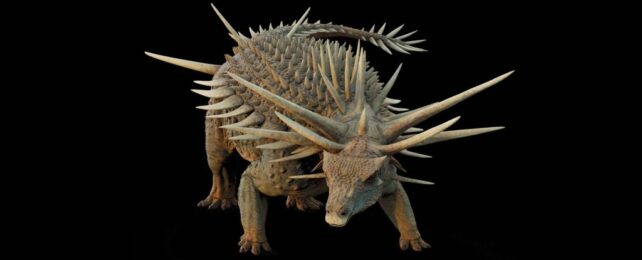The earliest ankylosaur on the fossil record sported the most extreme adornments ever seen in a vertebrate animal, even other ankylosaurs.
Spicomellus afer, which lived during the Middle Jurassic more than 165 million years ago, wore spikes not just along its body and on its clubbed tail, but in elaborate rings of huge spikes around its neck and hips.
"I've spent my career working on armored dinosaurs but I'd never seen anything like this," paleontologist Susannah Maidment of the London Natural History Museum told ScienceAlert.
"There were so many shapes and sizes of spikes: some joined together to make spikey compound structures; several ribs with spikes attached to their top surfaces; tear-drop shaped plates; and a whole bunch of things that I couldn't even identify. And then there was this collar-like bone with meter-long spikes sticking out from it. At that moment I realized we were looking at something unlike anything anyone had ever found before."
Related: Scientists Described a Dinosaur's Butthole in Exquisite Detail
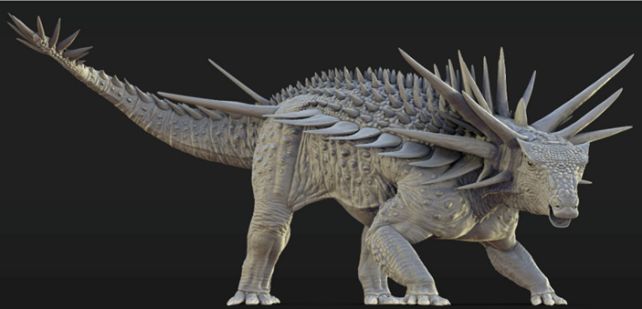
Ankylosaurs are among the more charismatic monsters that once roamed our planet. Their thick hides – lined with heavy, bony armored plates, knobs, and spikes – call to mind dramatic dinosaur showdowns as the ankylosaur defends itself from becoming another dino's meal. One of the most amazing dinosaur fossils ever found is an ankylosaur, in fact, one with its armored back perfectly preserved.
Spicomellus is the earliest known member of the Ankylosaurus genus that later expanded to its peak during the Cretaceous. Previously, Spicomellus was known only from a single, partial rib bone found in Morocco that scientists had used to describe the species back in 2021.
That would be just the first ankylosaur to be found on the African continent. In 2023, a local farmer in Morocco reported the recovery of several peculiar bones that he managed to save from floodwaters. The researchers traveled under a permit to see the bones and excavate the place where they were found in the hope of finding more.
What they uncovered blew them away.
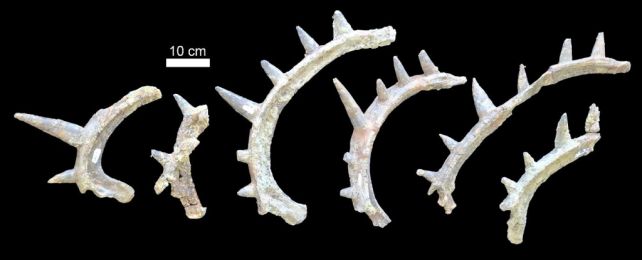
"It was immediately clear that it was jaw-droppingly weird – seeing those fossils for the time was genuinely spine-tingling," paleontologist Richard Butler of the University of Birmingham in the UK told ScienceAlert.
"As we excavated more of the fossil ourselves and prepared the rock from around the fossils it became stranger and stranger."
Spicomellus was spikier than a punk rave. It was spikier than an introvert with a depleted social battery. It was positively bristling with bony protrusions, the longest measuring up to 87 centimeters (2.85 feet) from the collar around its neck. These were probably longer when the dinosaur was alive.
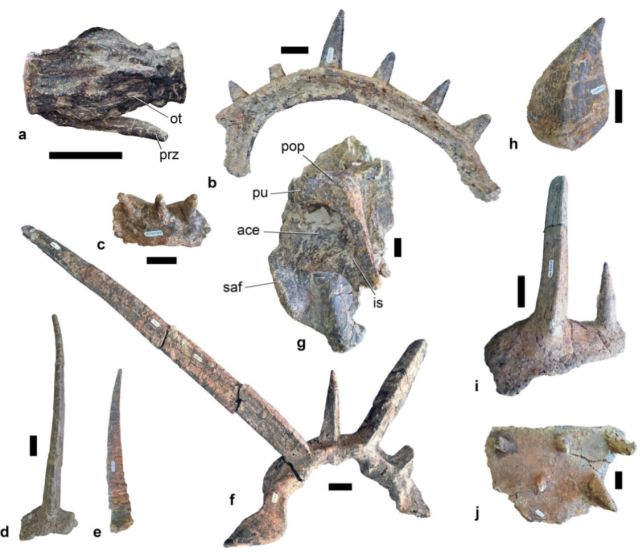
A selection of Spicomellus afer bones. (Maidment et al., Nature, 2025)"All of the ribs of Spicomellus that we have so far have three or four large spikes coming out of them. No other animal that we have ever found – alive or dead – has been discovered with spikes like these on its ribs," Butler elaborated.
"But not only this – Spicomellus also had an armor shield over its pelvis with large spikes coming out of it and a collar of armor around its neck with spines the length of golf clubs, a meter or more in length. This armor morphology is completely unlike that in any other known ankylosaur."
The current thinking on ankylosaurs is that their armor served a primarily defensive purpose. The armor of Spicomellus seems to have been way too unwieldy to have served much practical use. This suggests a different role the spikes may have played in the animals' lives.
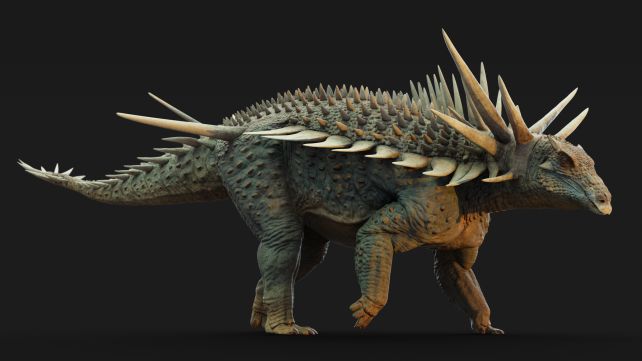
"Spicomellus had meter-long spikes extending from a bony collar around its neck. Presumably this would have been a bit annoying to carry around and is massive overkill to prevent something biting you, so we think that this armor was actually used for display rather than defence," Maidment explained.
"Today, animals that have structures with no obvious function tend to use them for display: for example, a deer's antlers or a peacock's tail. Perhaps Spicomellus used its armor in courtship displays, fighting, or to attract a mate."
Punks at a rave. Got it.
It's unusual to see such elaborateness in such an early member of a group of animals, Butler noted. The loss of armoring could be a result of different environments, or the changing ecology from the Jurassic to the Cretaceous, which saw predators like Tyrannosaurus rex emerge. A large, elaborate neck frill could hinder survival, and more utilitarian plates boost it, seeing a selection towards plainer appendages.
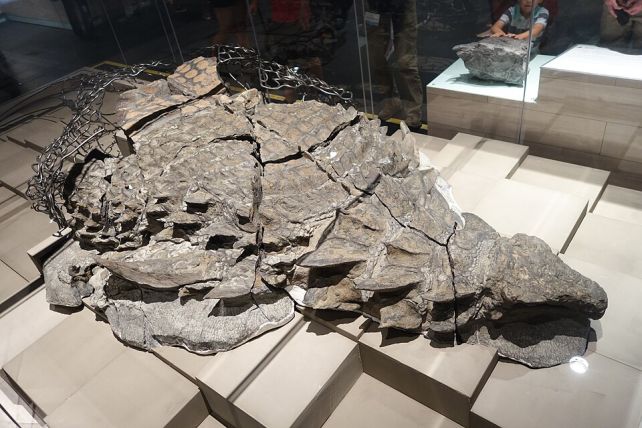
It's also possible that there were other extremely spiky ankylosaurs that haven't been found yet. They could help fill in some of the gaps between Spicomellus and the ankylosaurs that came after.
In the meantime, we can now officially say that Spicomellus existed, and was extremely weird. The next step is to go to where it lived and try to find other specimens – a somewhat challenging endeavor, given that fossil poaching in the region is rife. Indeed, the researchers noted that Spicomellus bones appeared to be for sale in Europe, possibly from the same individual that they describe in their new paper.
So, for now, the researchers are keeping the exact location under tight wraps in the hope of learning more about this strange, magnificent beast.
"Our team will continue to explore the exciting and never-before-seen ecosystem in the Middle Atlas Mountains," Maidment said. "We hope to reveal many more weird dinosaurs, and perhaps another skeleton of Spicomellus. It would be great to find its skull!"
The research has been published in Nature.
